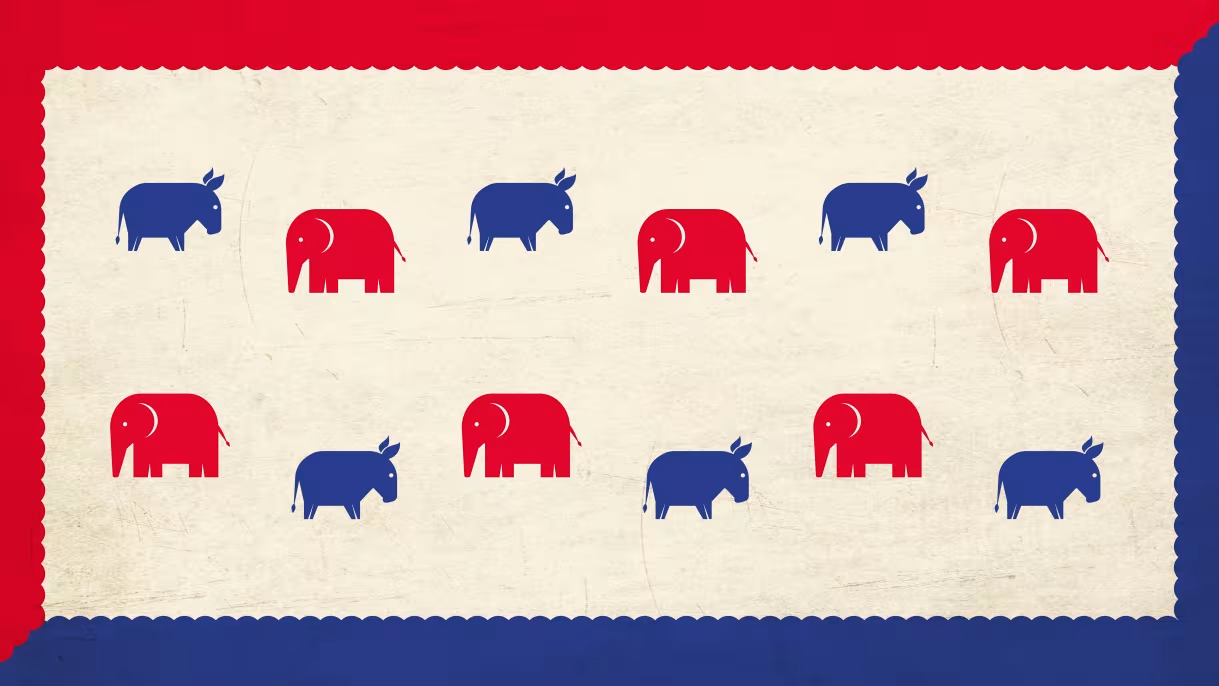

Princeton SPIA Case Study Offers Some Hope for Future Bipartisanship
Political polarization in contemporary U.S. politics appears to be an intractable, permanent problem, threatening a near-constant state of legislative gridlock and vitriolic dialogue.
However, a new case study by researchers in the Princeton School of Public and International Affairs’ Innovations for Successful Societies program offers a few glimmers of hope.
Martha B. Coven, a visiting lecturer in public and international affairs, and Elliot Mamet, a postdoctoral research associate, developed the case study for the first-year MPA course Politics of Public Policy, which Mamet is co-teaching with ISS Director Jennifer Widner, a professor of politics and international affairs, and others. The pair spent this past summer and fall interviewing members and staffers of the U.S. House Select Committee on the Modernization of Congress, which was established by Congress in 2019 to, as one Republican House member put it, “produce a bipartisan product aimed at improving the way Congress functions now and into the future.”
The committee began its work with a bipartisan agenda-setting retreat that included a candid conversation among its members – six Democrats and six Republicans – about why they had come to Congress and how the experience had met or failed to meet their expectations.
“What was stunning was to hear story after story of Democrats and Republicans who were inspired by a virtuous mission and came with good intentions,” Rep. Derek Kilmer, a Washington Democrat and Princeton SPIA alumnus, who cochaired the committee, told Coven and Mamet. “They were all frustrated with being part of an organization that was punching far below its weight, which built a common bond.”
For four years, the committee worked to develop a series of recommendations for Congress to take up. (The committee had no legislative power of its own; other committees were responsible for advancing its legislation.) Around 20 percent of its more than 200 recommendations have been fully implemented, and Congress continues to consider more than 80 others.
The measures passed by the committee were truly bipartisan; a two-thirds majority was required for approval. Perhaps as important as the committee’s output was the way it went about its business.
Unlike the usual committee setup, in which members sit in two rows of stadium-style seating, separated by party, the Select Committee met at a rectangular table, with Democrats and Republicans alternating seats. The members hired a bipartisan staff to support them jointly. Together, they studied the practices of state legislatures and traveled overseas to visit the European Parliament and the United Kingdom’s House of Commons to learn about their internal practices. Members even spent time in each other’s home districts.
“The committee’s greatest impact on bipartisanship may have stemmed from how it modeled cooperation rather than from the specific recommendations it was able to advance,” Coven and Mamet wrote.
Much of that cooperation, according to Coven, was fostered by the amount of time the committee members spent engaging with each other as people – not as legislators from opposing parties.
“Spending time together in non-adversarial settings — like dinners, trips, and informal committee meetings — is key to building relationships across party lines,” she said.
As if navigating hyperpartisan waters wasn’t challenging enough, the committee was forced to reckon with a pair of monumental, troubling events that could have halted its work.
Not long after the committee formed, the COVID-19 pandemic swept across the globe, all but eliminating in-person meetings for the next year. For a group working on building relationships with each other, the timing could hardly have been worse. Then again, as Coven and Mamet noted, “the pandemic’s restrictions added urgency to the committee’s work on relationship building and bipartisanship.”
Seeking to continue the less structured conversations the committee members had begun having, they successfully lobbied the House parliamentarian for an exception to the rule limiting a member’s speaking time to five minutes – a way to make their virtual meetings more meaningful and productive.
A bigger threat to the group’s nascent harmony was the January 6, 2021, insurrection attempt at the U.S. Capitol. With some of the Republican committee members voting not to certify the results of the presidential election – a victory for Joe Biden – heightened tensions within the group threatened to derail the entire initiative.
Instead of devolving into toxic finger-pointing and vicious rhetoric, the committee met the situation head-on, bringing in experienced mediators to facilitate heart-to-heart conversations “in a structured way, with an eye toward conflict resolution,” as Kilmer put it.
“What surprised me most is that the committee directly confronted the massive distrust between the parties after January 6 and managed to work through it,” Coven said.
The Select Committee on the Modernization of Congress disbanded in January 2023. While it produced some modest legislative successes, few would argue that the House has gotten notably less polarized or gridlocked over the last five years.
However, its work possibly “helped create the enabling conditions for subsequent bipartisan action on legislation,” wrote Coven and Mamet, including pandemic response measures, the Bipartisan Infrastructure Law, the CHIPS and Science Act, and reauthorization of the Violence Against Women Act, along with more-routine measures such as annual appropriations bills and national defense authorization acts.
In addition, the committee members’ willingness to reach across the aisle and build strong relationships with one another, along with wide-ranging support from members ranging from conservative to progressive, showed that there is an appetite for working together across differences.
Finally, said Mamet, with presidential power expanding greatly over the last few decades, “the Modernization Committee’s work to strengthen congressional capacity provides a blueprint for asserting Congress’s institutional role as a co-equal branch of government.”

